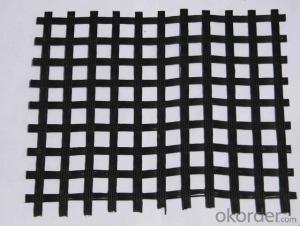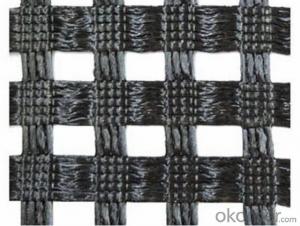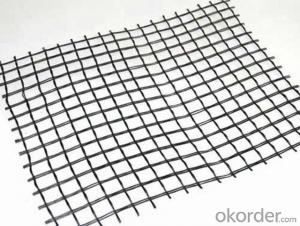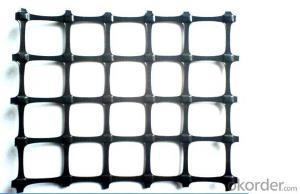Retaining Wall Reinforcement Geogrid with CE certificate
- Loading Port:
- Qingdao
- Payment Terms:
- TT OR LC
- Min Order Qty:
- 30000 g/m²
- Supply Capability:
- 600000 g/m²/month
OKorder Service Pledge
OKorder Financial Service
You Might Also Like
Structure of Retaining Wall Reinforcement Geogrid Description:
It is mainly used in highway and railroad to reduce the subsiding difference ofthe roadbed and bridgehead, lower the vibration of the vehicles and theroadbed, slower the roadbed structure distortion to guarantee the security and comfort.
Main Features of Retaining Wall Reinforcement Geogrid:
tensile strength:15KN/m-100KN/m
width:1-4m
length:50-100m
color:black
pp/hdpe geogrid
Retaining Wall Reinforcement Geogrid Images
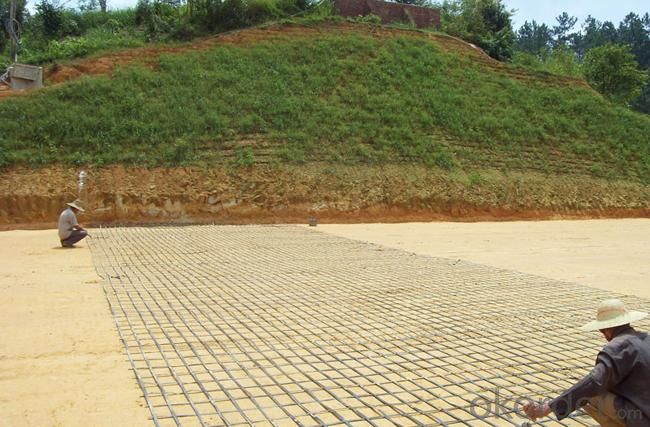
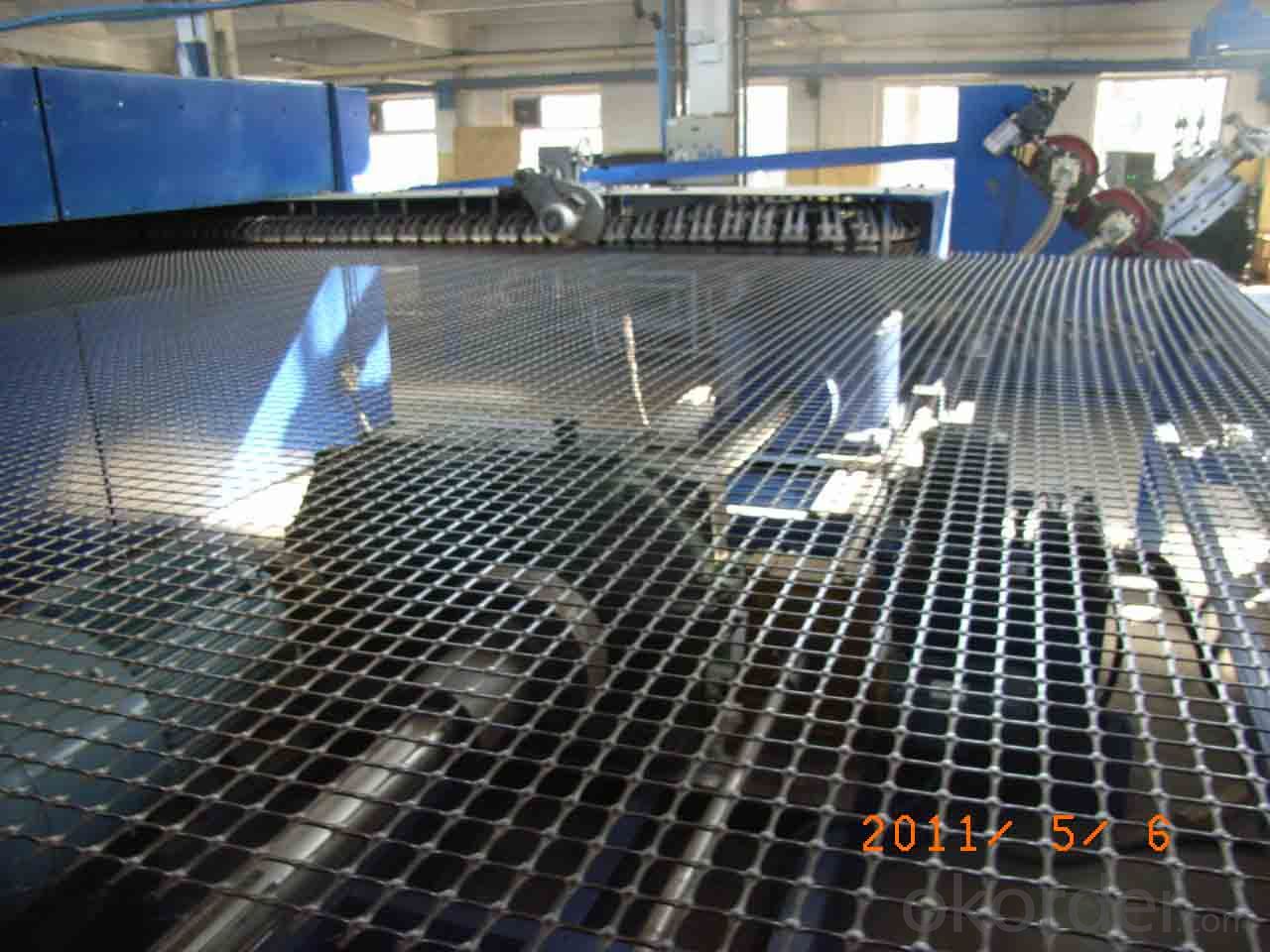

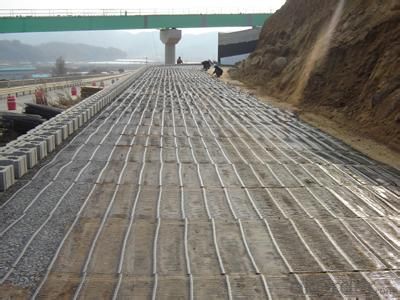
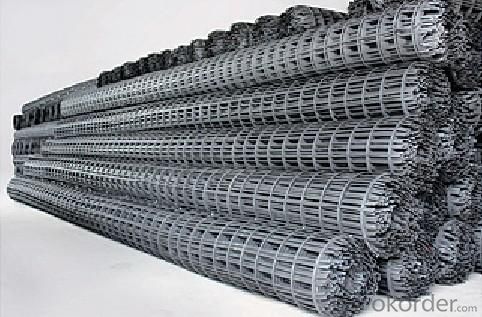
Retaining Wall Reinforcement Geogrid Specification:
Item | Art. No. | PLB010301 | PLB010302 | PLB010303 | PLB010304 | PLB010305 |
Specs | TGSG15-15 | TGSG20-20 | TGSG30-30 | TGSG40-40 | TGSG45-45 | |
Unit weight,g/m2 | 300±30 | 330±30 | 400±40 | 500±50 | 550±50 | |
Width,m | 4.0+0.2/-0 | |||||
Tensile strength(MD), kN/m≥ | 15 | 20 | 30 | 40 | 45 | |
Tensile strength (CD),kN/m≥ | 15 | 20 | 30 | 40 | 45 | |
Elongation(MD),%≤ | 15 | |||||
Elongation(CD),%≤ | 13 | |||||
Tensile strength at 2% strain(MD),kN/m≥ | 5 | 7 | 10.5 | 14 | - | |
Tensile strength at 2% strain(CD),kN/m≥ | 5 | 7 | 10.5 | 14 | - | |
Tensile strength at 5% strain(MD),kN/m≥ | 7 | 14 | 21 | 28 | - | |
Tensile strength at 5% strain(CD),kN/m≥ | 7 | 14 | 21 | 28 | - | |
FAQ
We have organized several common questions for our clients,may help you sincerely:
Q1: How about your company?
A1:Our company are one of the largest geosynthetic products supplier in the world.We have the products experience more than 20 years.Already export to USA/Germeny/Australia/Zambia/Brazil etc.more than 20 countries.Almost 10years.Our products including Geocell/Fiberglass Geogrid/Geomembrane/Geotextile/Geonet etc.
Q2.Does your products have good qualitity?
A2:Yes,we have do many big projects such as the 2008 Beijing Olympic BIRD NEST. Divert water from the south to the north project. And our products have CE certificate also.
Q3:How long can we receive the products after purchase?
A3:In the purchase of product within three working days, We will arrange the factory delivery as soon as possible. The pecific time of receiving is related to the state and position of customers.Commonly 15-20 working days can be delivery.
- Q:Are geogrids suitable for reinforcing slope stabilization mats?
- Yes, geogrids are suitable for reinforcing slope stabilization mats. Geogrids provide additional strength and stability to the mats, helping to prevent erosion and soil movement on slopes. They enhance the load-bearing capacity of the mats and improve their overall performance in stabilizing slopes.
- Q:Three how much is the price of Geogrid
- There are three to foreign patent products, domestic manufacturers do not report.
- Q:Are geogrids suitable for use in soil reinforcement for wind turbine foundations?
- Yes, geogrids are suitable for use in soil reinforcement for wind turbine foundations. Geogrids provide effective reinforcement by increasing soil stability, reducing settlement, and improving load distribution. They enhance the overall performance and longevity of wind turbine foundations, making them a suitable choice for such applications.
- Q:How do geogrids help in reducing carbon footprint in construction projects?
- Geogrids help in reducing carbon footprint in construction projects by providing reinforcement to soil structures, thereby reducing the need for additional materials like concrete or asphalt. This results in a decrease in the usage of fossil fuel-based materials and the associated carbon emissions during production and transportation. Additionally, the use of geogrids reduces the need for excavation and land disturbance, which further minimizes carbon emissions and the environmental impact of construction projects.
- Q:What are the factors that affect the design of geogrid installations?
- There are several factors that can influence the design of geogrid installations. Firstly, the type and condition of the soil plays a crucial role as it determines the required strength and stability of the geogrid. The load that the geogrid will be subjected to is another important factor, as it dictates the necessary tensile strength and stiffness of the geogrid. Additionally, the slope and geometry of the project site need to be considered to ensure proper installation and performance of the geogrid. The climate and environmental conditions, such as temperature and moisture, can also impact the design, as they can affect the durability and long-term performance of the geogrid. Finally, the availability and cost of materials, as well as any relevant regulations or design standards, should be taken into account during the design process.
- Q:What is the recommended geogrid connection method for specific applications?
- The recommended geogrid connection method for specific applications depends on factors such as the type of soil, slope angle, and expected load conditions. Some common geogrid connection methods include mechanical connectors, welded connections, and soil wrap-around techniques. It is important to consult with a geotechnical engineer or follow manufacturer's recommendations to determine the most suitable connection method for a specific application.
- Q:What are the differences between geogrids and geotubes?
- Geogrids and geotubes are both geosynthetic materials used in civil engineering and environmental applications, but they have distinct differences. Geogrids are typically made of polymer materials and are designed to provide soil reinforcement and stabilization. They have a grid-like structure with open spaces and are used to improve the strength and bearing capacity of soils. Geogrids are commonly used in road construction, retaining walls, and slope stabilization projects. On the other hand, geotubes are large, tubular containers made from high-strength woven or non-woven geotextile fabrics. They are used for shoreline protection, coastal erosion control, and dewatering applications. Geotubes are filled with sediment, sludge, or other materials and then dewatered, allowing water to escape while retaining the solid contents. They are often used in coastal engineering projects to create or restore beaches, control erosion, and contain contaminants. In summary, while geogrids are used for soil reinforcement and stabilization, geotubes are used for dewatering and containment purposes in coastal and environmental applications.
- Q:What is the market price of the geotechnical grid in 2017?
- (4) the first layer of geogrid paved, began to fill with second layers of 0.2m in thick sand (coarse), the method of sand transport to the site: car unloading to the subgrade side, then put forward to push the bulldozer, within 2 meters on both sides of the subgrade filling after 0.1M, the first layer of geogrid fold up and then fill in 0.1 meters in the sand (coarse), from both sides to the middle filling and advance, prohibit all machinery without filling (coarse sand) of Geogrid on traffic operation, it can guarantee the geogrid is smooth, does not play drums, do not wrinkle, stay in the second layer (coarse) after the formation of sand, the level of measurement, to prevent uneven filling thickness, leveling and correct use of vibratory roller 25T static pressure two times.
- Q:Are geogrids suitable for reinforcement of railway ballasts?
- Yes, geogrids are suitable for reinforcement of railway ballasts. Geogrids offer excellent tensile strength and stability, which helps to distribute loads and prevent ballast movement and degradation. They also improve drainage and reduce the risk of track settlement, making them an effective solution for reinforcing railway ballasts.
- Q:What are the design considerations for geogrid-reinforced pavements on soft soils?
- Some of the important design considerations for geogrid-reinforced pavements on soft soils include assessing the soil properties, determining the appropriate geogrid type and placement, considering the load-bearing capacity and stability requirements, evaluating the potential for differential settlement, accounting for construction and maintenance factors, and ensuring proper drainage to prevent water accumulation.
1. Manufacturer Overview |
|
|---|---|
| Location | |
| Year Established | |
| Annual Output Value | |
| Main Markets | |
| Company Certifications | |
2. Manufacturer Certificates |
|
|---|---|
| a) Certification Name | |
| Range | |
| Reference | |
| Validity Period | |
3. Manufacturer Capability |
|
|---|---|
| a)Trade Capacity | |
| Nearest Port | |
| Export Percentage | |
| No.of Employees in Trade Department | |
| Language Spoken: | |
| b)Factory Information | |
| Factory Size: | |
| No. of Production Lines | |
| Contract Manufacturing | |
| Product Price Range | |
Send your message to us
Retaining Wall Reinforcement Geogrid with CE certificate
- Loading Port:
- Qingdao
- Payment Terms:
- TT OR LC
- Min Order Qty:
- 30000 g/m²
- Supply Capability:
- 600000 g/m²/month
OKorder Service Pledge
OKorder Financial Service
Similar products
New products
Hot products
Related keywords



























